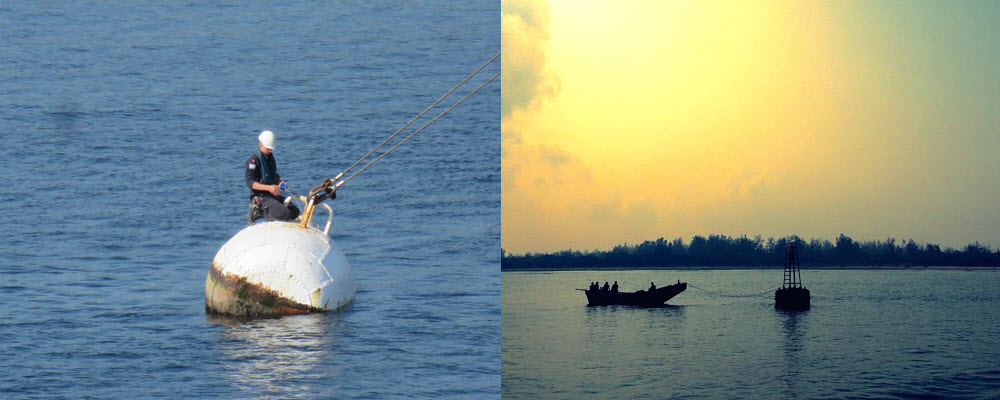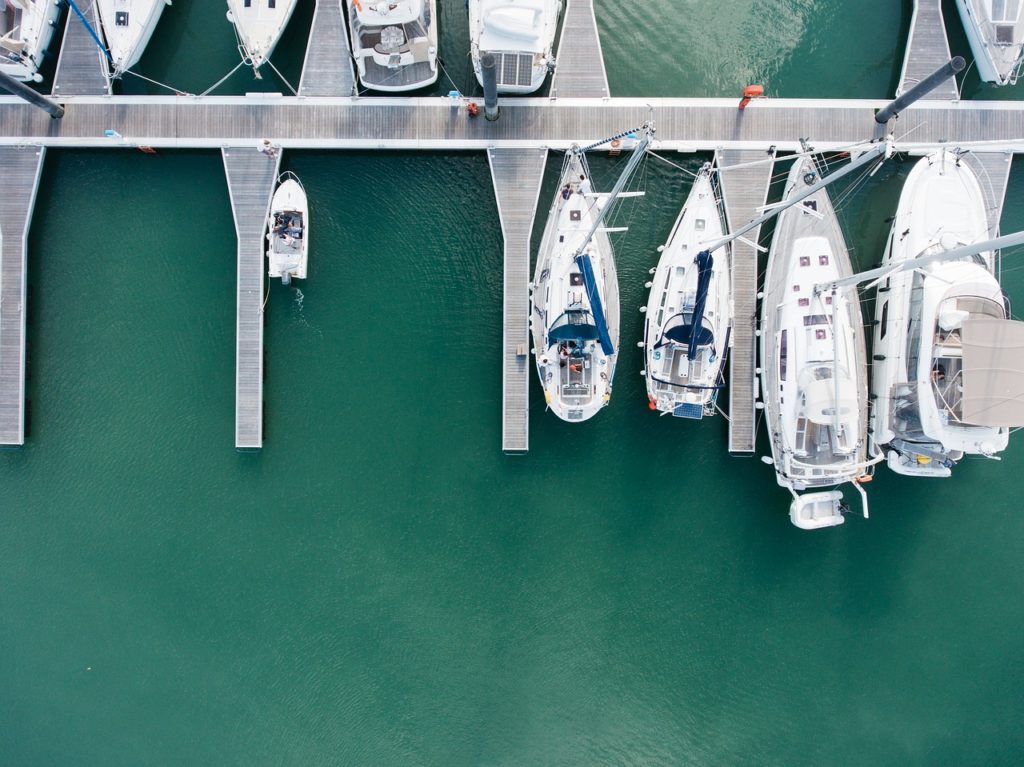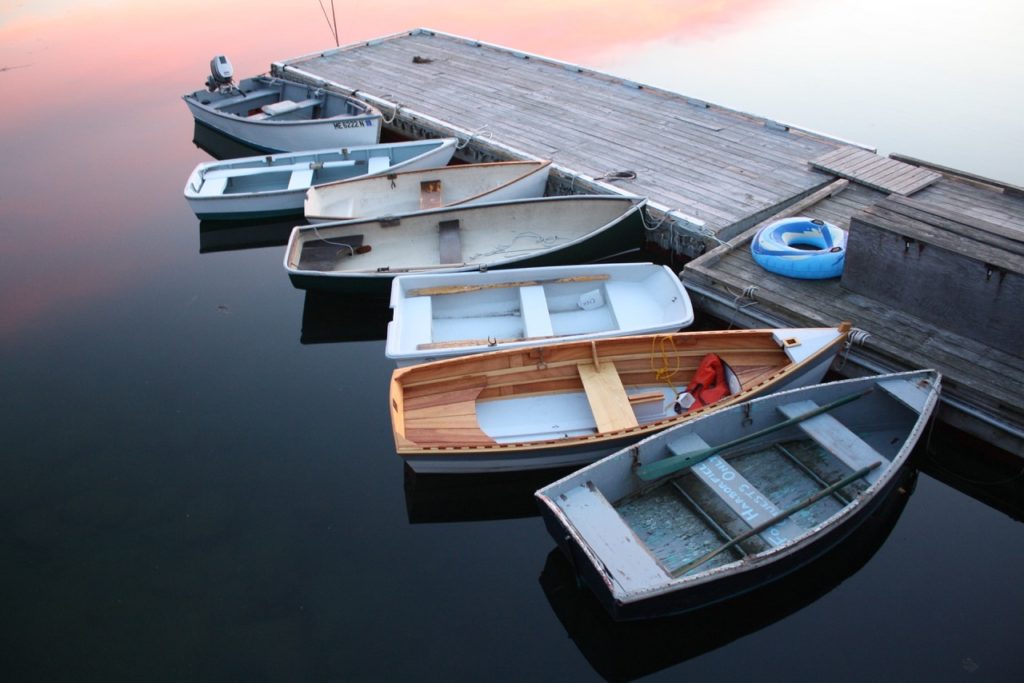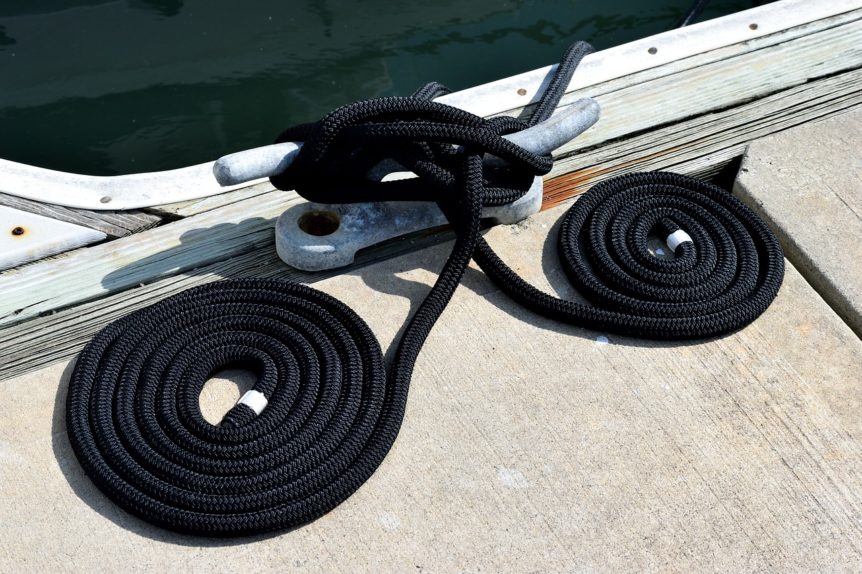If you’re a boat owner or thinking of becoming one, one of the fundamental things you need to know is: where is it legal to tie up your boat?
There are strict laws that you need to adhere to and, therefore, must know before you get underway. Otherwise, your peaceful weekend on the water could quickly turn into a legal nightmare that is better avoided.
So, with that being said, here are the places and circumstances where it’s legal to tie up your boat.
Mooring Buoys
First off, if you’re not familiar with the term, you might be wondering – What is a mooring buoy?
This type of buoy is not a regular, bright-colored floating marker in the middle of the sea. Mooring buoys are a lot heavier than conventional buoys and are typically used to tie up ships in the middle of a body of water. It has a heavy weight located at the bottom of the sea, to anchor and hold the buoy in place.

Here’s how to moor a boat:
- First, direct your boat to a position where you can see the buoy.
- Next, look out for the pick-up line and use your hook to latch on to it.
- Direct your boat’s bowline to pass through the pick-up line.
- Then, attach the ends of the bowline to the cleat of your vessel. It’s never a good idea to tie the pick-up line directly to your boat.
- Also, don’t anchor your boat to the moor using a stern tie, as this could potentially damage it.
- Finally, once you’ve tied your vessel to the mooring buoy, double-check the knots to ensure that everything holds up well.
At the risk of stating the obvious, ensure that the buoy you’re anchoring your boat to is a mooring buoy. There are several others you’ll find on the water that are illegal to use. They include:
- Safe water markers – These are also called fairway buoys and are identified by their red and white vertical stripes. Don’t anchor your boat to these.
- Non-lateral markers – These are used as navigational aids and are characterized by their white and orange markings. They also have black letters displayed on them.
- Regulatory buoys – These are white with two horizontal orange stripes and a diamond/circular shape between the lines. They indicate dangers or restrictions that approaching vessels should be aware of.
Tying Your Boat to a Dock
You also need to know how to tie a boat to a dock. A dock is a structure that extends outward from the shore into the sea, ocean, lake or any other body of water.
Here’s the thing about mooring your boat to a dock. If you don’t do it properly, you might just end up with a damaged boat hull as a result of the vessel rubbing against the main dock, the dock finger, or worse, another boat – and you know what that means.

There are several ways to moor your boat to a dock.
1. Using Breast Lines
These are docking lines that are designed to move the boat closer to the floating dock. Their short length secures the boat, therefore, preventing it from drifting away.
2. Using Bow and Stern Lines
The idea behind using these two docking lines is to prevent your boat from drifting away or shifting from side to side. Bow lines run from the bow forward to the dock, whereas stern lines run from the stern and aft to the dock at the back of the boat.
Also, check that your lines are not a tripping hazard; otherwise, you could be liable for damages if someone trips on them and falls.
3. Using Spring Lines
Spring lines are designed to oppose the aft motion of the boat as it floats on the dock. The aft spring lines oppose the stern motion of the boat, while the forward ones oppose the bow motion.
Where Is It Legal to Anchor a Boat?
So far, we’ve looked at mooring buoys and docking a boat. Anchoring refers to using your own, well – anchor, to secure your vessel.
Anchoring can only be done for short periods at a time. You shouldn’t leave your vessel unattended for long periods. Before you go ahead and anchor your boat, ensure that you’re familiar with your local boating laws to identify the areas where anchoring is prohibited. Otherwise, you might just land yourself a citation.

Certain areas, for instance, have been marked no-anchoring zones to keep marine pathways open for commercial boats passing through. In other areas, local governments have imposed an outright ban on anchoring to clear the water of liveaboards and abandoned boats.
When you do anchor your boat in a permitted area, ensure that your anchor light remains on at dusk or during any low-visibility condition.
Other Boating Laws
Aside from the mooring, docking, and anchoring regulations in your state, you may also want to know:
- Is it legal to drink on a boat?
- Is it legal to carry a gun on a boat?
The law on these varies from one state to the next, so check your state laws. In Michigan, for instance, drinking on the water is not illegal. Both the passengers and boat operator can cruise around with a pint or two of beer.
However, the blood-alcohol level of the boat operator should never exceed 0.1 percent. Anything above that and you’ll be arrested for boating under the influence (BUI). So, get to know what the blood-alcohol limits in your state are before taking your boat out on the open water.
As far as the legality of carrying a firearm goes, the short answer is – yes, it is legal. However, some specific laws and regulations may apply. It ultimately comes down to whether or not your state-issued concealed-carry license or permit allows you to open-carry your weapon – in which case you can take it on board your boat.
State vs. Federal Maritime Laws
So, in summary, it is legal to tie up your boat to mooring buoys, boating docks, and anywhere else where anchoring your boat does not obstruct traffic for commercial vessels.
It’s always a good idea to read up on your local boating laws to avoid getting a citation for mooring or anchoring your boat in a prohibited zone.
Additionally, there are varying state and federal laws and regulations that govern boating activities on any body of water or navigable waterway within the US. Some waterways cross multiple jurisdictions, so it’s important to read up on the laws for each jurisdiction. Failure to adhere to state and federal maritime laws may land you in hot water.
If you caused damage to another boat in the water or run into any other type of boating-related trouble, you will want to get in touch with a skilled maritime lawyer since liability claims under maritime laws can be quite substantial.
If you have any legal questions, you can chat online with a Laws101.com attorney. We’re always available to help point you in the right direction.
